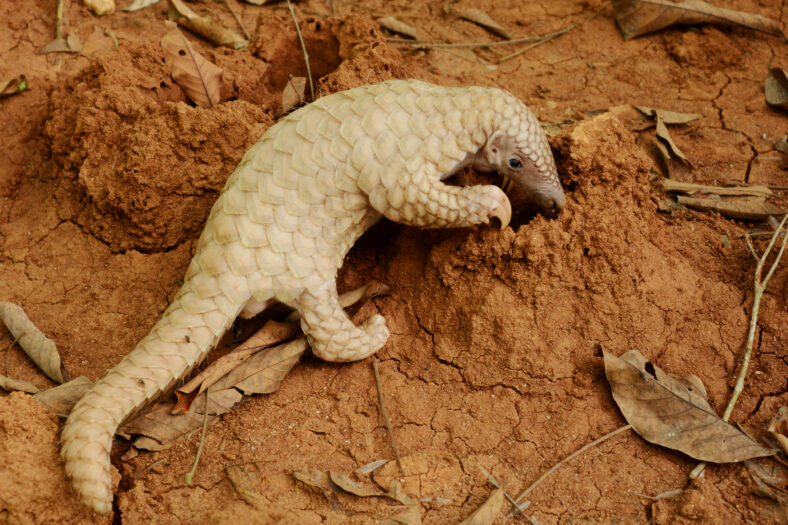The First Fossil Pangolin Trackway Has Been Uncovered, And It Dates Back Thousands Of Years

The first fossil pangolin trackway in the world has been identified on South Africa’s southern Cape coast. It was initially discovered in 2018 on the surface of a loose piece of rock that was formed from hardened sand.
The rock had ended up near the high-tide mark in the Bosbokfontein Private Nature Reserve in South Africa.
A team of researchers examined it carefully, but at the time, they could not figure out what had made the tracks. In 2023, they collaborated with Indigenous Master Trackers from northeastern Namibia.
The trackway consisted of eight tracks and two scuff marks made by the animal’s tail. After studying the rock’s surface for quite some time, they came to the conclusion that the trackway was left by a pangolin. It was a stunning declaration to make since no fossilized pangolin tracks had ever been recorded before.
In addition, it confirms that pangolins had a wider range than previously thought. The team then used a technique called photogrammetry to create 3D digital models of the trackway. This came in handy because the chunk of stone containing the trackway was too large to be moved.
The images of the trackway were shared with other South African tracking and pangolin experts. They all agreed that the interpretation was accurate.
Pangolins typically walk on two legs with a waddling gait, using their tail for balance. The hind foot track of a pangolin looks like a mark made from a round stick poked into the ground. It has a slightly triangular shape because it’s a little bit wider at the front end.
The species that left the tracks was most likely the Temminck’s pangolin. Other candidates, like the serval, genet, and jackal, were considered as well, but they were far less likely.
At the time the pangolin walked across the surface, the region contained loose dune sand rather than stone. The tracks were estimated to have been made between 90,000 and 140,000 years ago during the ice ages in the Pleistocene epoch.

Sign up for Chip Chick’s newsletter and get stories like this delivered to your inbox.
Luckily, the trackway was identified before it deteriorated due to erosion. The discovery of the trackway is important because it calls attention to the fact that pangolins are endangered today. All eight species are disappearing fast and are considered to be threatened with extinction.
Pangolin meat is regarded as a delicacy, and their scales are used in traditional medicines. They are one of the most trafficked wild animals in the world.
Every year, large numbers of pangolins are hunted in Africa for their meat. Habitat loss and fragmentation are also major threats.
Hopefully, more secrets of ancient animals can be uncovered with the help of Indigenous Master Trackers, whose expertise has been of great value to science.
The details of the new study have been published in the South African Journal of Science.
More About:Animals





